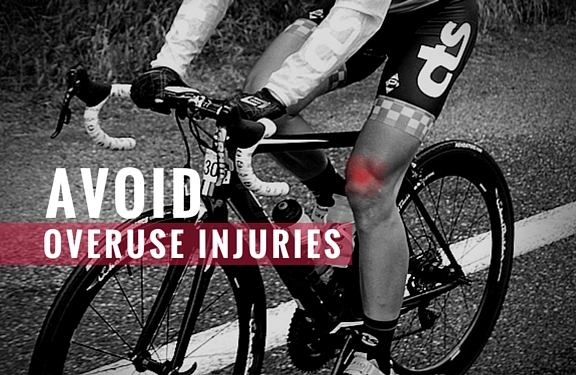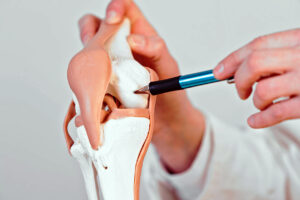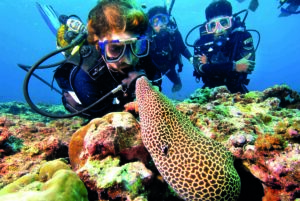From training errors to misalignment of body parts, a number of factors may be responsible for overuse injuries in sportsperson
In some cases, injuries precipitated by a period of inappropriate tissue loading. For instance, injuries can occur in case of excessive magnitude or volume of load or insufficient recovery between bouts of load. These kinds of injuries are referred to as ‘overuse injury.’ These injuries are caused by repeated microtrauma. It is not a specific or single injury event. Therefore the term ‘overuse’ is used as a broad term to define such occurrences. These are caused by repetitive activities over a period of time. The symptoms may appear gradually. For example, the athlete or person suffering from overuse injury may not feel any pain in the initial stages. But, as time passes by, the affected person may exert pressure on the injured area unknowingly. This increases the pain and symptoms appear gradually. These are often repetitive micro injuries caused to the tendons, bone and joints. Moreover, the repetitive microtrauma overloads the capacity of the affected tissue to repair itself.
During exercise or any physical activity, the tissues—muscles, tendons, bones and ligaments—undergo stress. After the activity is over, they undergo adaptation so that they can withstand similar stress later on. But, if their adaptive capability is affected due to injury, the same is termed as ‘overuse injury.’ Thus, it is important for an athlete or any other person undertaking a particular physical activity to allow adequate time to the tissues for adaptation.
Why do overuse injuries occur?
When someone performs an exercise or activity, his or her bones, muscles, tendons, and ligaments get stronger. They become more functional as a result of an internal process called remodeling. The remodeling process involves both the breaking down and building up of tissues. There is a fine balance between the two processes and if breakdown occurs more rapidly than building up process, injury occurs. This can happen when someone takes up sports for the first time or tries to do too much too soon. When you begin playing tennis and play for several hours in an attempt to improve rapidly, you are setting yourself up for an overuse injury. Some of the common factors responsible for overuse injury:
- Training errors
- Early Returning back to sports after an injury
- Technical Errors
- Biomechanical
- Individual blame.
- Old injuries.
- Incomplete rehabilitation.
- Anatomic factors.
- Faulty equipment or shoes.
Risk factors for overuse injury
There are certain conditions which put the athlete at risk. He or she can be vulnerable to overuse injuries due to training loads, intense competition schedules and insufficient recovery period. These factors can also be classified as:
Intrinsic Abnormalities:
- Misalignment of body parts.
- Instability of Joints
- Imbalance of muscle strength
- Weakness of Muscle
- Inflexibility
- Rapid growth.
- Foot Morphology: People with a high arched foot (elevation of the longitudinal arch of the foot is high) are at greater risk. People with flat foot (pes planus) are at moderate risk.
- Athletes suffering from Iliotibial Band (ITB) syndrome are also at risk. It is a common lateral knee injury that occurs due to overuse and repetitive flexion and extension of the knees.
- People suffering from a condition known as Genu valgum or knock-knees are at a risk of developing Patello Femoral Syndrome (pain in the front of the knee or around the knee cap). In such cases, there is a knee misalignment that turns the knees inward. When such people stand up with their knees together, there’s a gap of at least 3 inches between their ankles.
Extrinsic Abnormalities
- Training error: For instance, the athlete is running too fast.
- Equipment mismatch: For example, an athlete is exercising on a cycle that is poorly-fitted and the seat height is incorrect.
- Technique error: For instance, if the sportsperson makes a shot with improper racquet swing
- Environmental factors: For example, running on pavement.
Diagnosis
It is advisable that the comprehensive history of the onset, nature and site of pain is examined. It is important to carry out a thorough assessment of potential risk factors. The specific anatomical structure needs to be examined. Some of the common overuse syndromes are as follows:
- Bone – Stress Fracture, Spondylolysis.
- Physeal Cartilage – Little League Shoulder, Gymnast Wrist.
- Epiphyseal Cartilage – Osteochondritis dissecans of capitellum, OCD Femoral condye.
- Apophyseal Cartilage – Osgood- Schlatter Condition, Little league elbow, Iselin’s condition.
- Tendons – Achilles, Peroneal , Posterior Tibialis, Rotator cuff, Wrist flexors.
- Periosteal – Medial Tibial stress syndrome.
TREATMENT
In the first phase of the treatment, proper diagnosis is important. It is recommended to control inflammation by using the PRICEMM principles. The athlete must be removed from the offending activity immediately and measures should be taken to protect the affected body part from further injury using splints, padding, etc. The treatment of the overuse injuries should also lay emphasis on giving rest to the affected area. Active rest, including cross-training to maintain fitness without aggravating the injury, is necessary.
It is recommended to limit immobilisation to minimum. Application of ice to the affected area is recommended to minimize swelling and reduce pain. It should be applied for 20 minutes every 3 hours for 3 days. Apply compressive wrap if the swelling exists. The patient is asked to elevate the involved extremity if swelling exists. NSAID (ibuprofen, naproxen) can be consumed if pain and swelling exist for a maximum of 14 days. Electric stimulation via a physical therapist is also suggested. The later phase of the treatment focuses on promoting healing and regaining the normal strength and range of motion. This is best done by a licensed physical therapist trained in the rehabilitation of sports injuries.
The next phase puts stress on increasing fitness to return to sports. In this phase, the athlete will regain the strength and endurance for his/her particular sport. The last phase is to control abuse. Once the athlete has returned to his/her sport, care must be taken not to develop the injury again by doing “too much too soon.” Certain braces or taping may be employed to limit re-injury.




